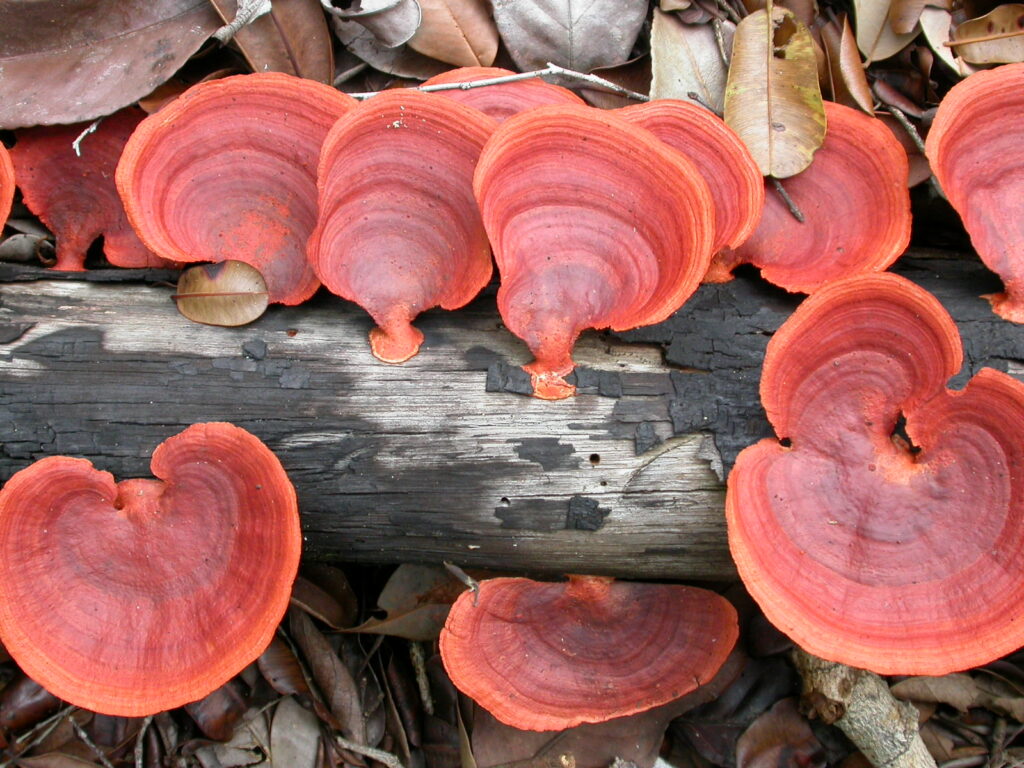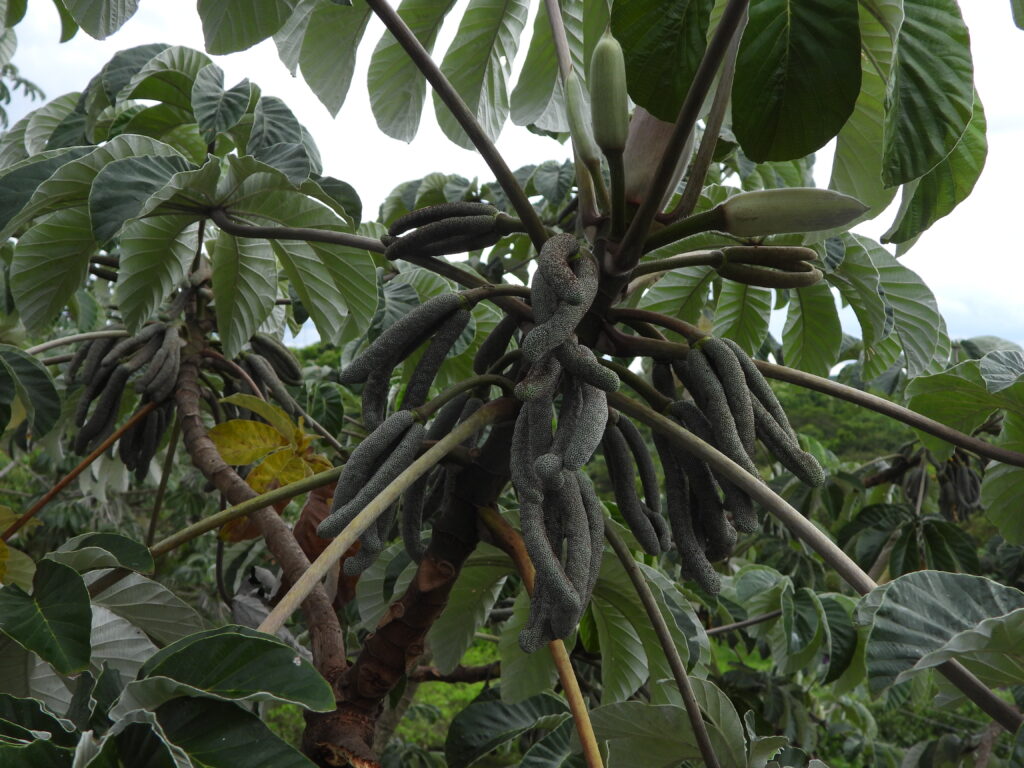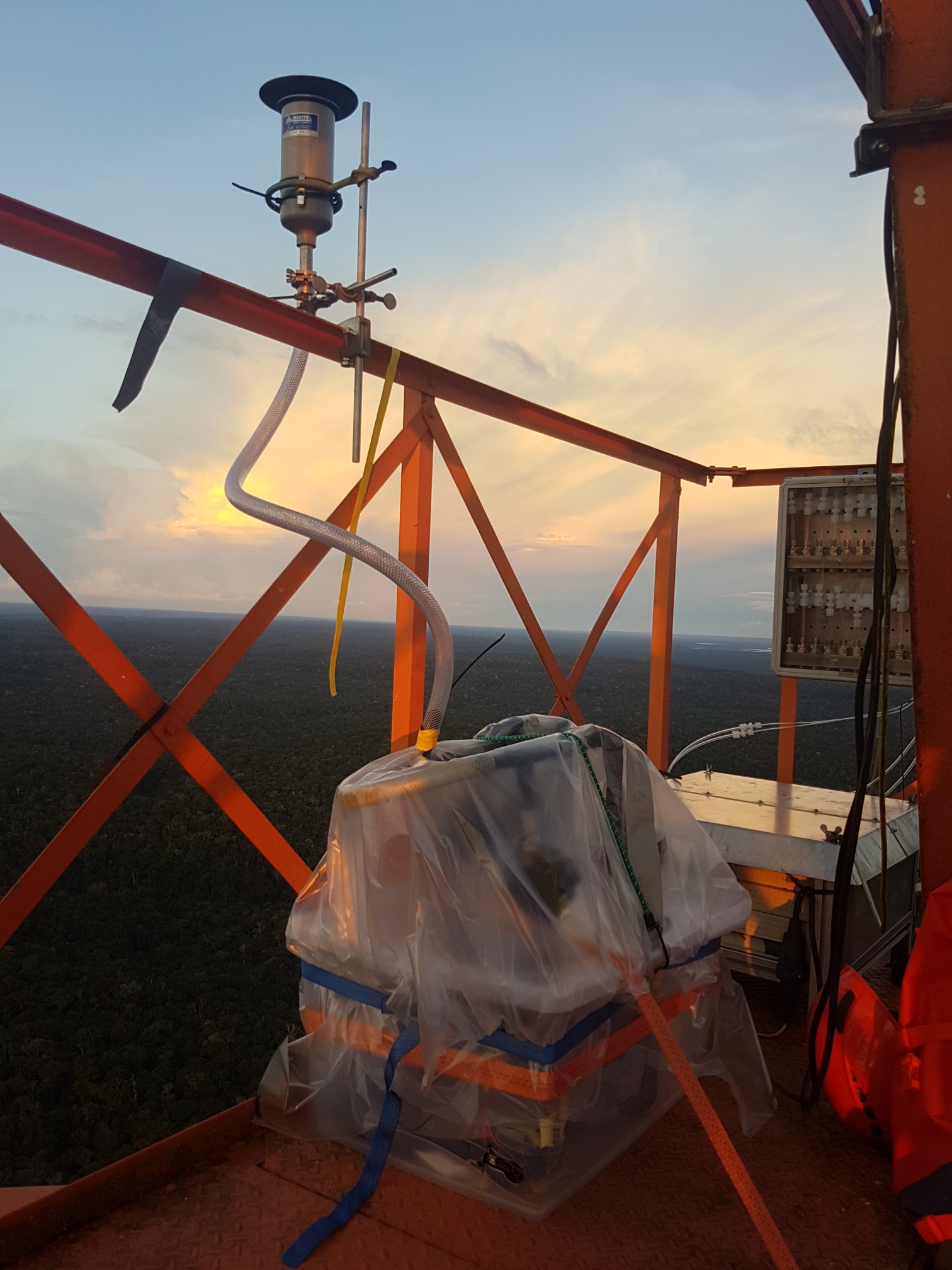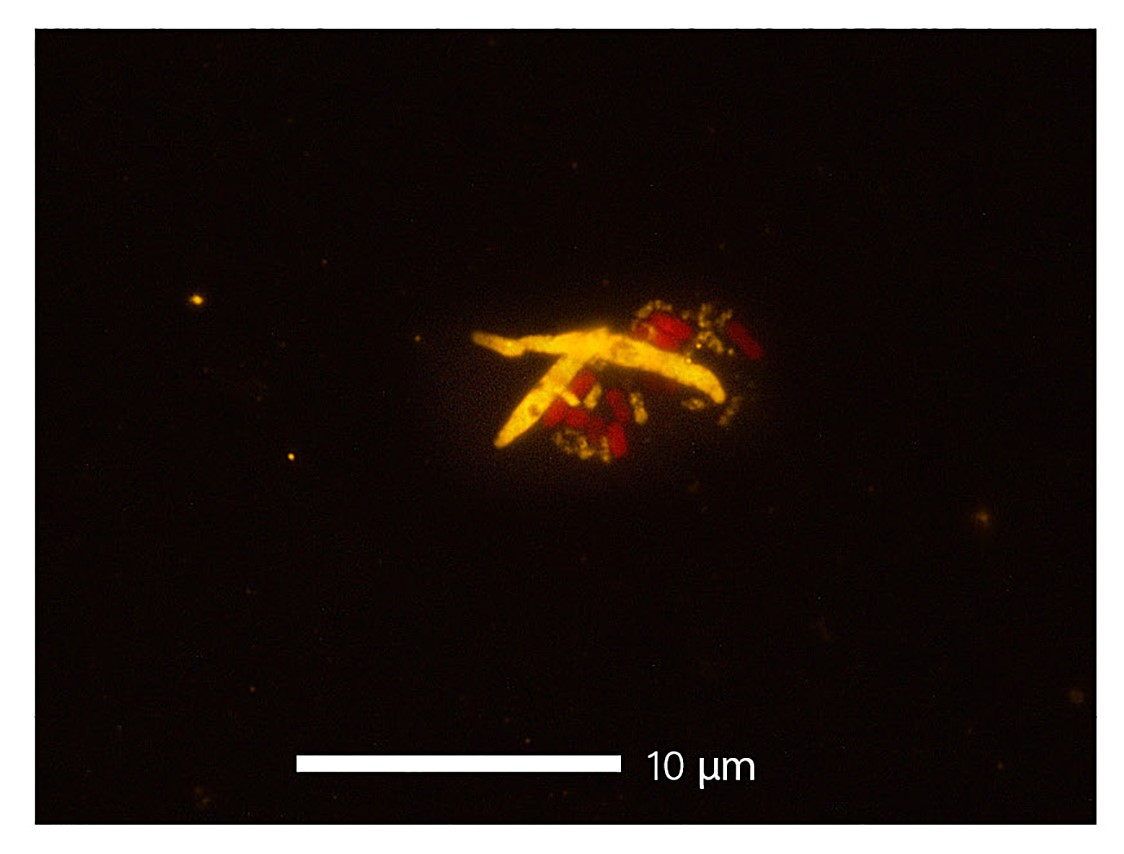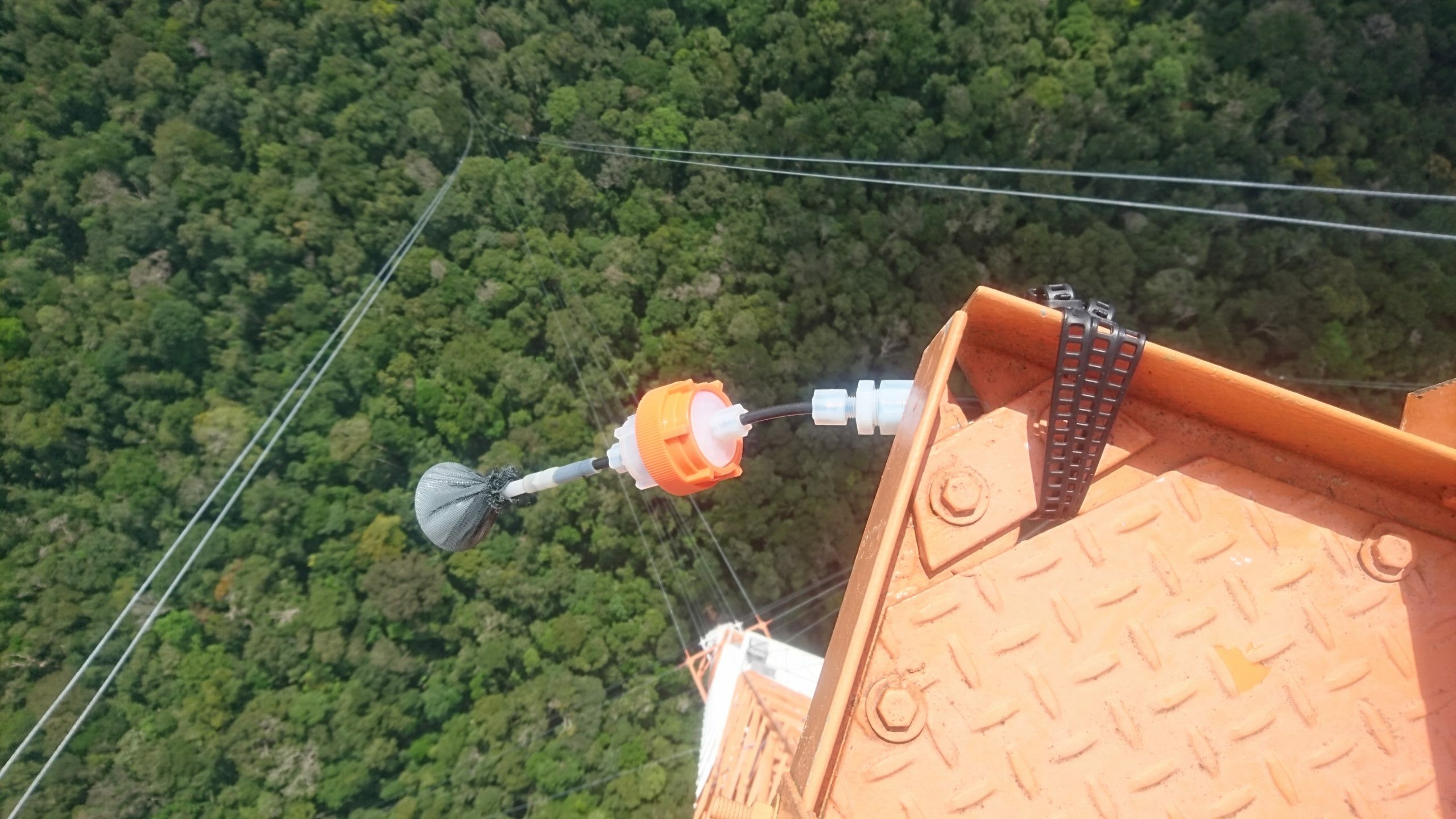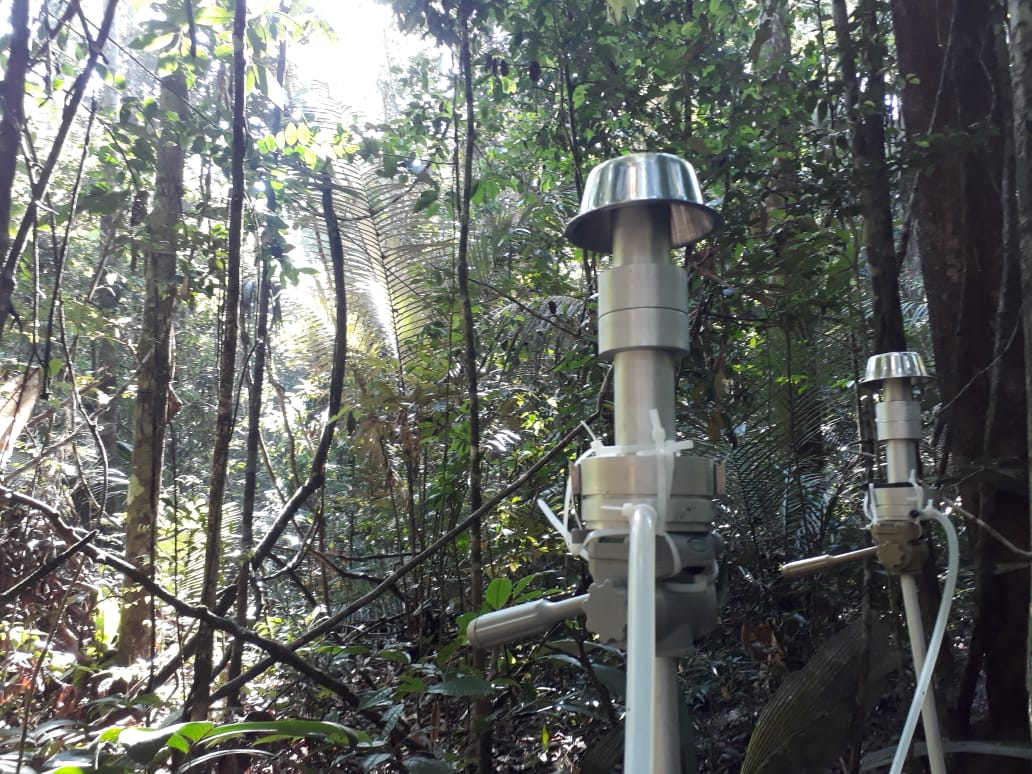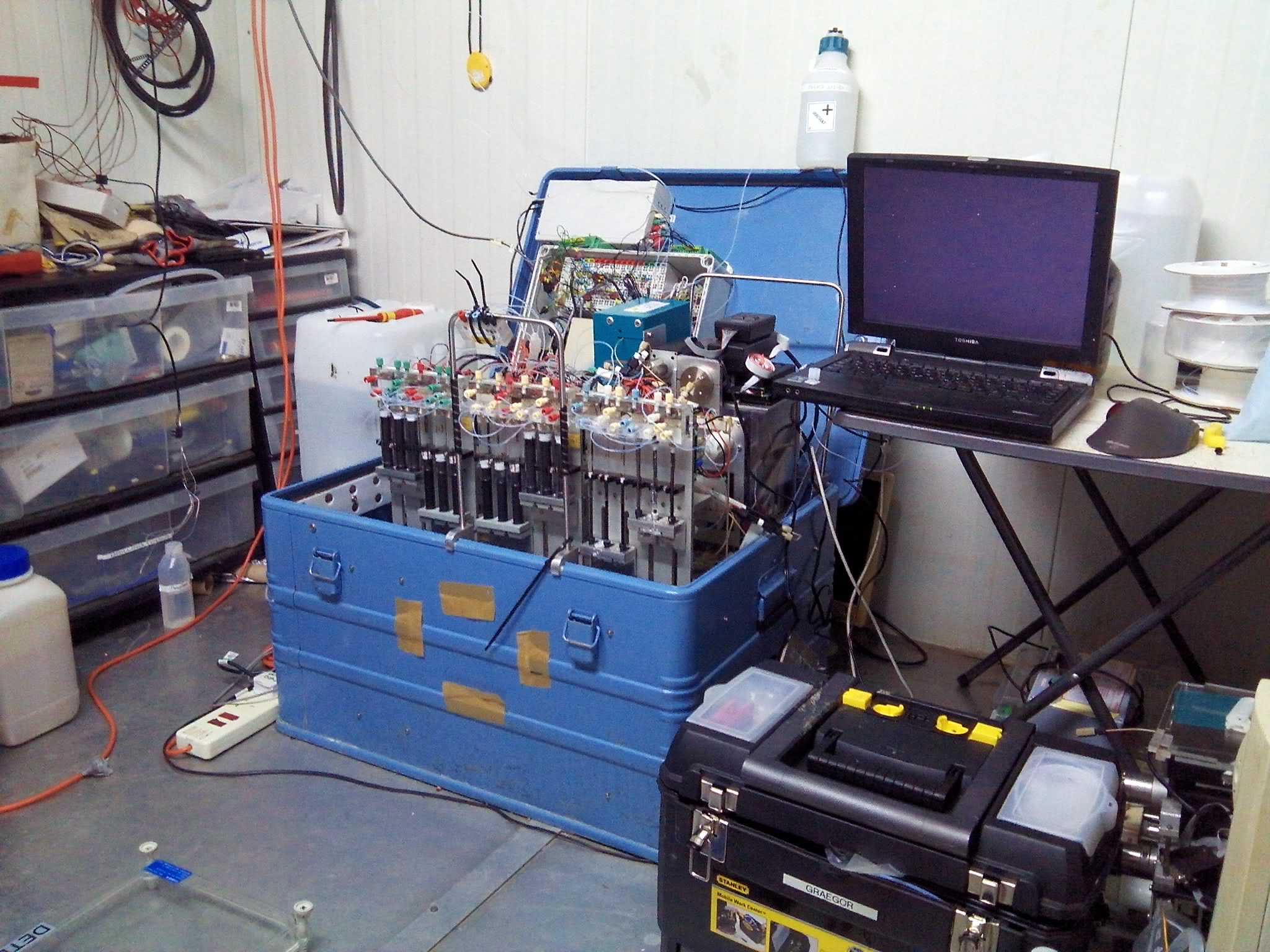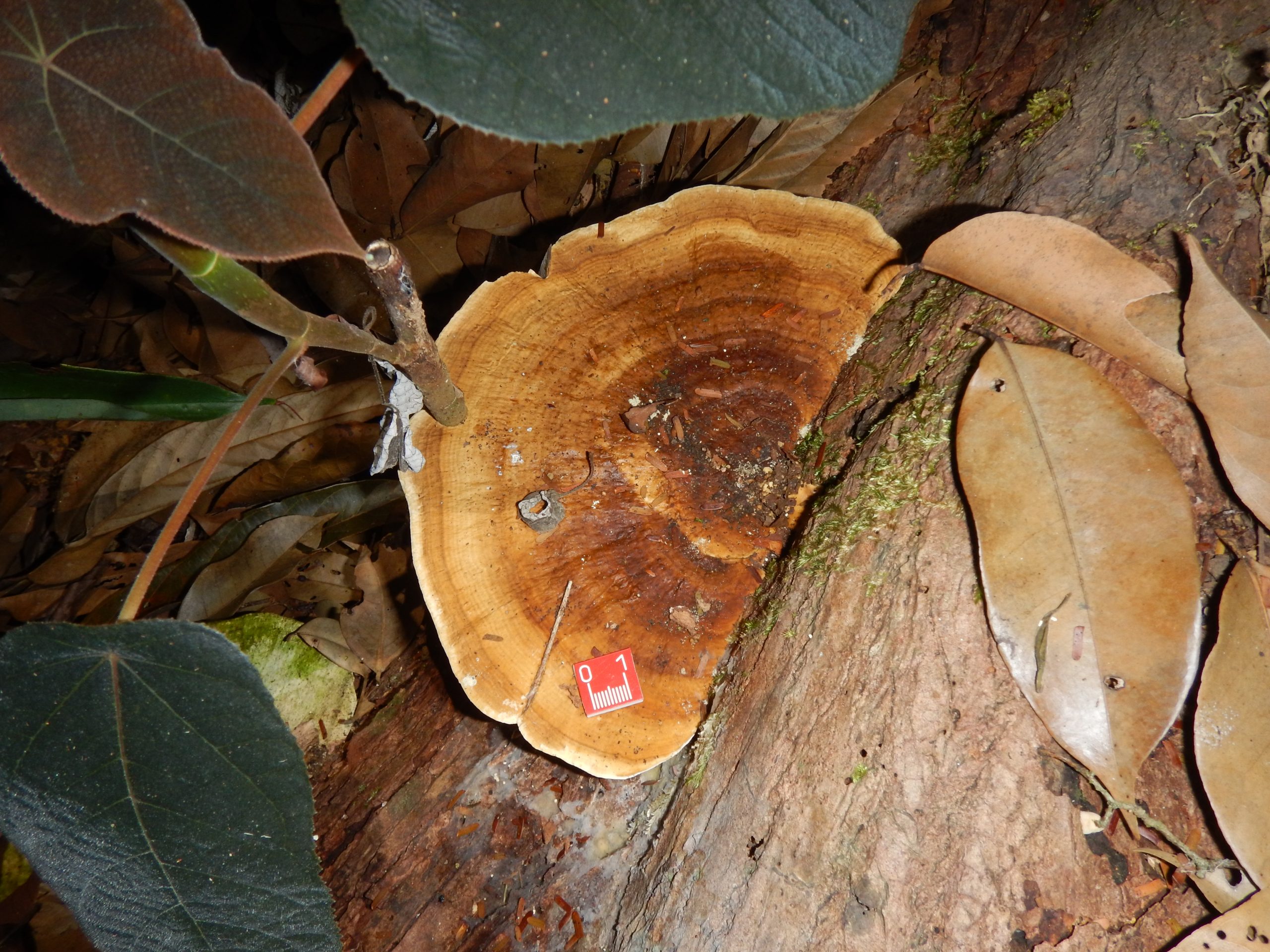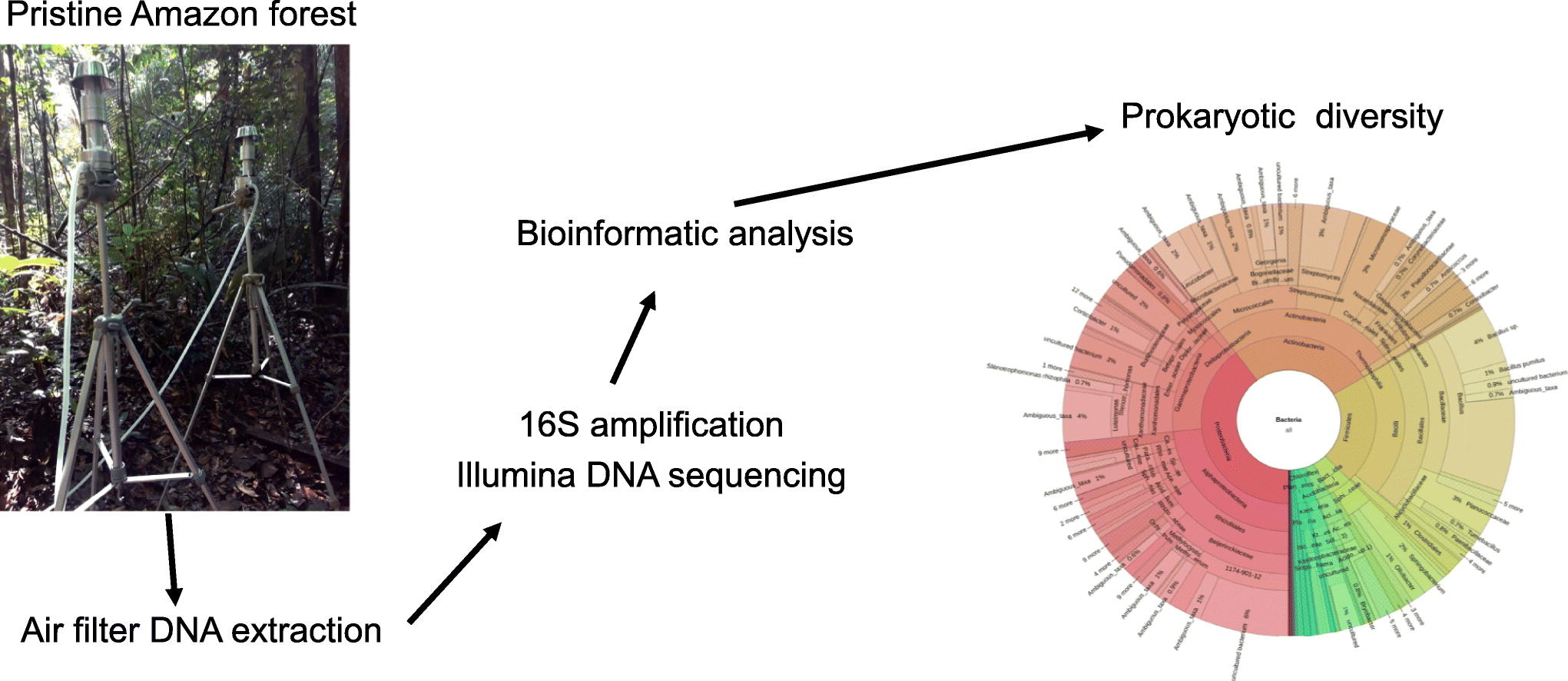Identifying bioaerosols in the Amazonian atmosphere
Biological particles suspended in the atmosphere, such as pollen and fungi spores, are hugely important. Many previous studies, including those from ATTO, have focused on their chemical and physical properties. For example, scientists want to understand the role of these particles in cloud formation and precipitation.
But airborne biological particles, called bioaerosols, also influence the dynamics of the biosphere underneath. Plants and fungi disperse pollen and spores, respectively, to ensure pollination and fruit formation and to establish new organisms. In many cases, getting those particles into the air is essential to ensure their survival. Yet, so far, little is known about the biological taxonomic identity of these bioaerosols.
In a new study, Sylvia Mota de Oliveira and her colleagues set out to close that knowledge gap. They used the ATTO site to collect air samples at 300 m above the forest. Then, they used DNA sequencing to analyze the biological components that were present and figure out what species of plant or fungi they belong to.
Their results show that airborne species composition is intrinsically related to the environment underneath, and included many of the genera identified previously by the co-author Cybelli Barbosa, based on morphological characters. Many of the bioaerosols they identified in the air belong to Amazonian species frequent in the area. In plants, their findings are biased towards species that heavily rely on wind pollination. Species that use different mechanisms of pollen release have lower chances of the pollen grains becoming airborne. Therefore, the species composition in the atmosphere is different from the biosphere.
In addition to those Amazonian species, the team was also able to identify taxa living outside of the Amazon. They are mostly species known to have good wind pollination strategies. While their origin remains unclear, it is safe to assume that wind transported those particles across long distances to the study site. This confirms that wind transport is an important process to disperse species across regions.
But the most striking new insight is the stark contrast between the species composition in the near-pristine Amazonian atmosphere compared to urban areas. At ATTO the scientists found surprisingly few allergenic fungi and plant pathogens. They were still present, but in balance with rest of the vegetation. However, scientists have found that those species are relatively much more abundant in urban settings, which can cause problems. This means that plant and fungi populations are much more in harmony in forests, making the air healthier.
Sylvia Mota de Oliveira et al. published the study “Life is in the air: An expedition into the Amazonian atmosphere” Open Access in the journal Frontiers in Ecology and Evolution. doi: 10.3389/fevo.2022.789791
Similar articles
In a new study, Denis Leppla, Thorsten Hoffmann and their colleagues looked at pinic acid and its chiral forms. Pinic acid forms in the atmosphere through SAO formation from α-pinenes. The team wanted to find out how the chemical reactions in the atmosphere affect the chirality of its product pinic acid.
The Amazon rain forest plays a major role in global hydrological cycling. Biogenic aerosols, such as pollen, fungi, and spores likely influence the formation of clouds and precipitation. However, there are many different types of bioaerosols. The particles vary considerably in size, morphology, mixing state, as well as behavior like hygroscopicity (how much particles attract water) and metabolic activity. Therefore, it is likely that not only the amount of bioaerosols affects the hydrological cycle, but also the types of aerosols present.
Bioaerosols may act as cloud condensation nuclei and ice nuclei, thereby influencing the formation of clouds and precipitation. But so far there is less knowledge about the ice nucleation activity of each bioaerosol group and atmospheric models hitherto have not differentiated between them. Patade et al. created a new empirical parameterization for five groups of bioaerosols, based on analysis of the characteristics of bioaerosols at ATTO: fungal spores, bacteria, pollen, plant/animal/viral detritus, and algae. This makes it possible for any cloud model to access the role of an individual group of bioaerosols in altering cloud properties and precipitation formation.
Biogenic volatile organic compounds remove OH from the atmosphere through chemical reactions, which affects processes such as cloud formation. In a new study, Pfannerstill et al. reveal the important contributions of previously not-considered BVOCs species and underestimated OVOCs to the total OH reactivity.
Felipe Souza, Price Mathai and their co-authors published a new study analyzing the diverse bacterial population in the Amazonian atmosphere. The composition varied mainly with seasonal changes in temperature, relative humidity, and precipitation. On the other hand, they did not detect significant differences between the ground and canopy levels. They also identified bacterial species that participate in the nitrogen cycle.
Ramsay et al. measured inorganic trace gases such as ammonia and nitric acid and aerosols in the dry season at ATTO. They are to serve as baseline values for their concentration and fluxes in the atmosphere and are a first step in deciphering exchange processes of inorganic trace gases between the Amazon rainforest and the atmosphere.
Fungal spore emissions are an important contributor to biogenic aerosols, but we have yet to understand under what conditions fungi release their spores. Nina Löbs and co-authors developed a new technique to measure emissions from single organisms and tested this out at ATTO and with controlled lab experiments. They published their results in the Open Access Journal Atmospheric Measurement Techniques.
Felipe Souza and co-authors now collected bioaerosols at our ATTO site. Then they extracted and analyzed the DNA to determine the communities present. This is the first study that described the community of microorganisms within aerosols in the Amazon. They found many different types of bacteria and fungi. Some were cosmopolitan taxa, but they also identified many that are specific to certain environments such as soil or water. This suggests that the atmosphere may act as an important gateway for bacteria to be exchanged between plants, soil, and water.


